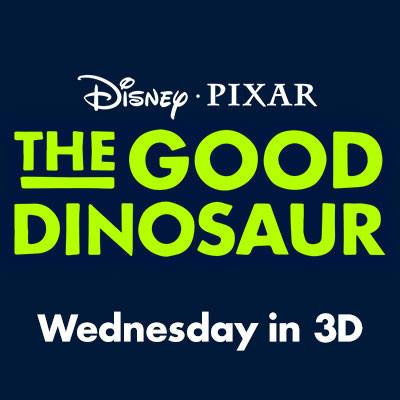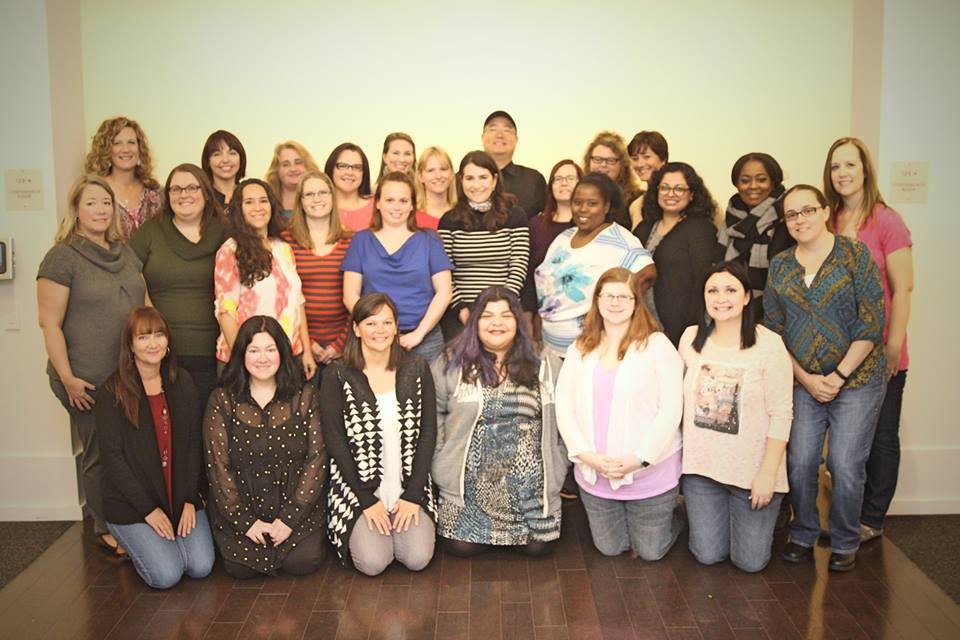I was invited by Disney on an all expenses paid trip for my coverage of the #GoodDinoEvent, #ABCTVEvent, & #LionGuardEvent. All opinions are my own.
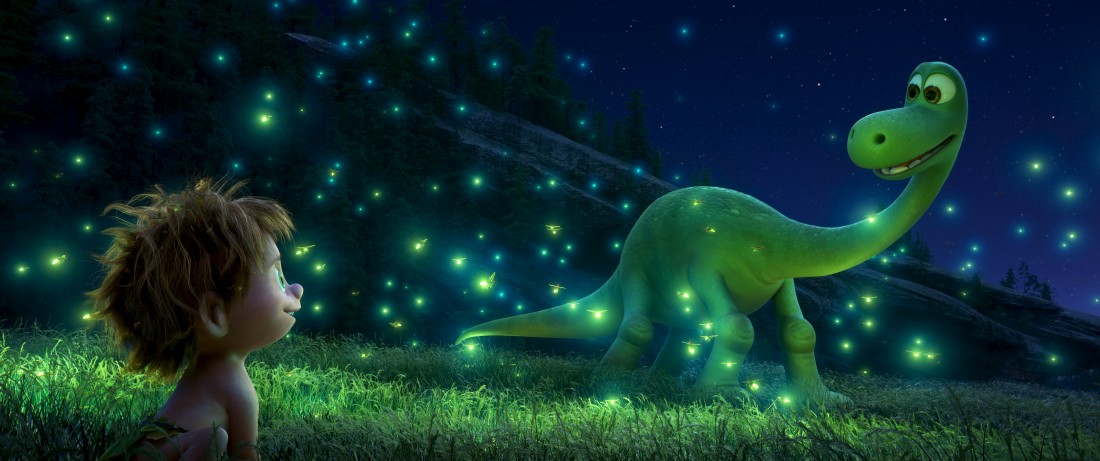
I always love being able to sit down with the creators of movies and hear their insight into the making of the film. Last week I had the chance to talk with Director Peter Sohn & Producer Denise Ream about their work on Disney·Pixar THE GOOD DINOSAUR which opens in theaters tomorrow 11/25!
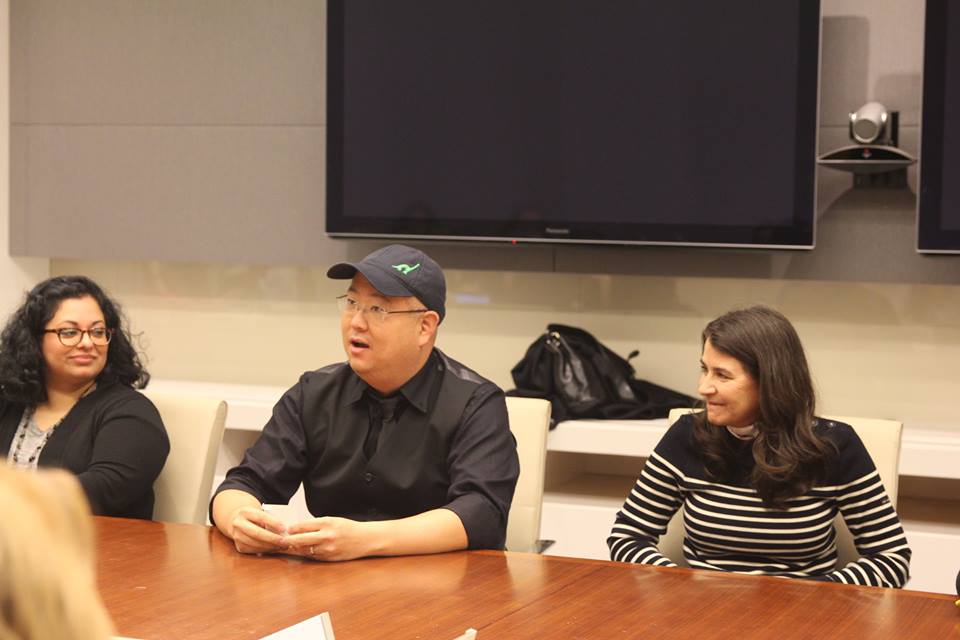
What led you into becoming the director of this movie?
Peter: This show was pitched by original director Bob Peterson in 2009 and then he asked me to come help develop the project. Then during the development I was doing story and designs for him and then he asked me to be his co-director. And so from that we were trying to wrestle the story. And it was tough. A lot of these Pixar films go through that kind of place where you put every answer and you go in every direction. We had the boy and dog story. We had a father-son story. We had a trying to change community story and then it was hard to kind of end it all.
So they asked me to become the director from there because I had known all the paths that we have gone through. So I basically, simplified it to Bob’s original pitch. I love Bob and he’s a great friend and so I just loved that original idea.
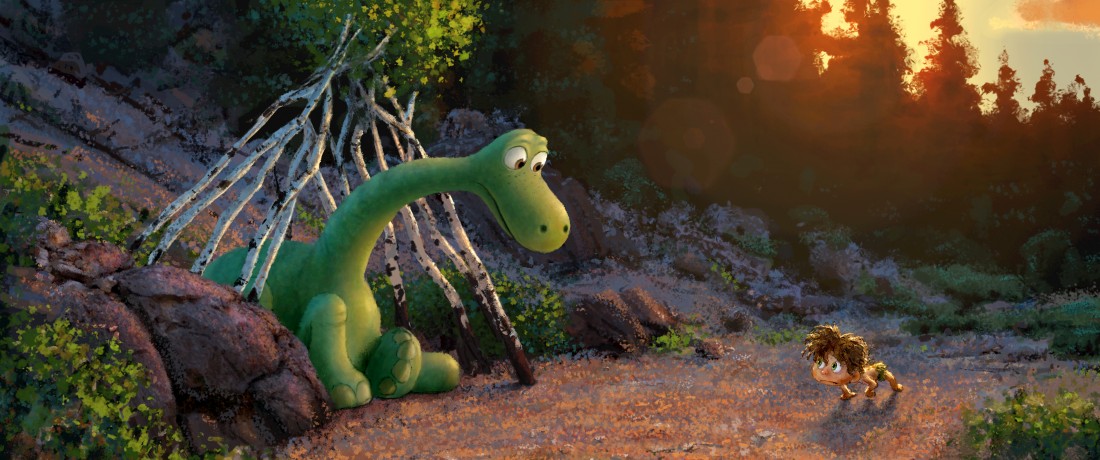
The realism in the animation is mind blowing. It’s amazing. Is there any special technology or animation advancement that was used to put that into place?
Denise: Well it’s not new technology but we ended up using Google maps to create a lot of the locations. It’s called USGS topological survey maps. We started with that and that got us a long ways to getting the big scope that we wanted. Then the trick was populating that terrain with the trees that we had modeled, the leaves, the mulch, the rocks, all of the vegetation.
This was the first time we used 3-D clouds, what we call volumetric clouds, throughout the entire film. Usually we map paint our clouds. We did a lot of water shots. Again, it’s not new technology but we did many, many more water shots then we’ve typically done in a Pixar movie. And then just in terms of the actual process we had a slightly different workflow process for the animators.
When you’re under the gun to get the show done you sort of dole out shots individually, and instead we gave each animator a run of shots that we felt would make a more consistent performance. So that was a very different workflow for the animation department, and they actually really, really loved it.
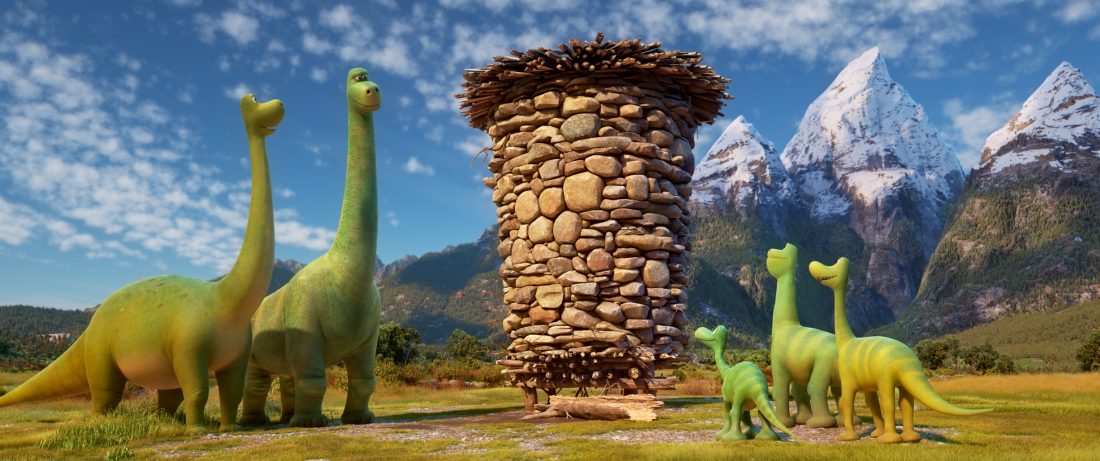
Peter: But all of it was in service to the story. We did a lot of research. Denise took us out. She said “let’s go get lost”. You know, I’m from New York and we went into the wilderness and the Rockies and I had never been before.Going out there, it was just so dang gorgeous. Going out there, it was just so awe inspiring that you could see 500 miles down that way and see the other 500 miles down that way. It was just full of clouds and it went forever. It was so soul enriching, it is something we wanted to capture.
Denise: Originally the story took place in a different part of the country. It wasn’t really our intention to set up where we did. But then when we got there, we thought gosh, it makes so much sense because that’s where you find dinosaur bones. And again it was very inspirational to us.
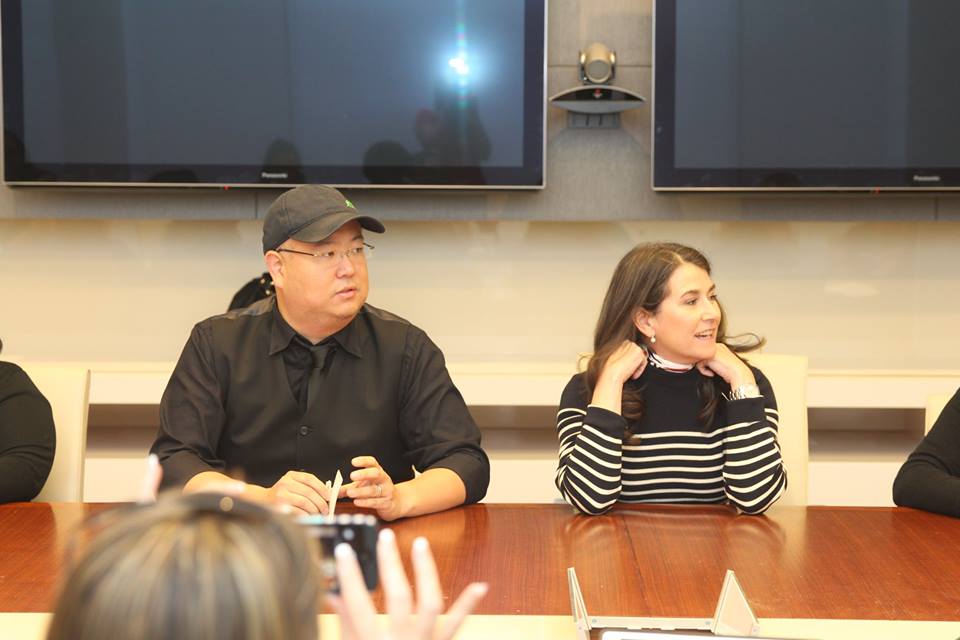
Once you decided it was going to be in the West, is that when you decided to bring in a lot of the Western elements?
Peter: It started off with the idea of doing a frontier story. It could’ve been in the south, like a Southwest kind of look. But, I grew up on the Westerns and it’s all I did was watch these movies. Shane was one of my favorite movies. In the opening of that film, there was this farm in front of the Teton Valley. It was the Grand Tetons and I was like “let’s go there”. And so that’s where we started everything.
Then it was lucky that there was a Snake River that went through there, we were like “oh, my goodness, this is exactly what we need for this story”. When you go out there, all you ever think about is ‘how did people survive out here?’, ‘How did they get across these mountains with nothing?’, ‘How did they do that?’
Growing up in New York my dad had a grocery store. So it was our small family, all of us in this little grocery store trying to survive in a city. Then all the research that we would do in meeting farmers and ranchers out there it hit me so hard that these were the same types of families surviving, but on thousands of acres. Each member of that family was an integral part for the survival of that family.
I totally connected. Look at these people. They’re living in love and working together up here in this really beautiful yet tough landscape. So it was really inspiring for us to try and say “let’s have our little dinosaur be a part of this family and he already feels like “I can’t contribute. I want to. Everyone has to do something for the survival of the family”.
Then when we went to do some research, we met this family, the McKay’s, and they have a large ranch out in Oregon. right on the border of Idaho and Oregon. It’s this really unique family. There is the mom and dad, both white and then they adopted five black Haitian kids. And so when you get there it was like whoa, this is a whole unique kind of family here. But they would change my life. The way that family lived in love really blew me away.

We have had an opportunity to meet the young men who voiced Arlo, Spot & Buck. They were very complementary of the direction you provided them. They said it was very inspiring to them.
Peter: Oh, that’s very nice. I love those guys. What’s funny is that I do scratch voice at work. I do a lot of temporary voices and I’d been through all the directors at Pixar and how they direct you. Sometimes it can be tough. Every director has their tools, and I learned a lot from them. So when I’m getting to work with these kids it was always like ‘you know what, I’ve been in those shoes’. “This is all going to be about trust. If we don’t get through the lines don’t worry about it. We’ll have some fun.”
Sometimes you have to be very emotional and I would be uncomfortable like if I’m in front of you guys and I’m like “okay and you have to cry now in this scene”. Sometimes we’re like “let’s turn out the lights, don’t worry about it”. It’s always about trying to find a secure place where you can be vulnerable. Those kids are such pros. They were so amazing, all of them.
What type of direction did you give them, specifically with Spot? He didn’t say a lot in the film.
Peter: There were two different things. Spot was mainly painting the situation for him and explaining that there were rules to Spot’s world. We didn’t want to go into a primate world because there was already a Tarzan. We really wanted to stay in this kind of canine world. I would just say “come as a character that’s brave, strong and tenacious and you know, Jack, I already know you are like that. As we grow we’re going to kind of take some of the layers away and find the little boy that Spot is”. Then he would understand that. It’s just about painting a picture with Spot until we got to the emotional places.
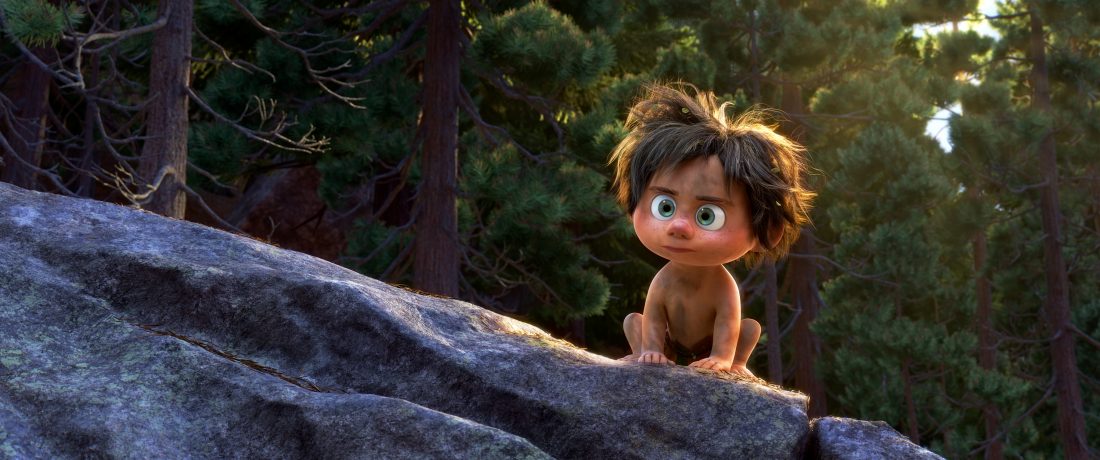
You’ve done a lot of voice work yourself and in this film you got to be the Pet Collector which is hilarious. Give us a little bit of background on doing your voice work and why did you choose that character?
Peter: I didn’t choose it really.
Denise: It was funny, we end up using a lot of people at Pixar to do the scratch voices that we used to cut the scenes against. And I was like “Pete, we don’t have time to go audition for this so you’re going to have to do it.
Peter: I was like, “We’ll find an actor. We’re going to find a real actor”.
Denise: You didn’t even want to do scratch. You were really reluctant to that. I was like “Pete, please we don’t have time”. And then you did the scratch, then we were just working on the scene. Then when Pete pitched the scene to John (Lasseter), John was like “you’re going to be the pet collector”. Pete was like “no, no, no I really want to go and get an actor”. So then John actually ended up directing the scene, which I thought was really fun.

Is there talk at all about another Good Dinosaur film?
Peter: We literally finished this film two weeks ago. When we started we only had under two years to make this and most animated films take from 4 to 5. So our schedule was just really jammed and I had two kids born through the production from 2009. My daughter is five,and my son Sam was three. The last two years my wife is a superhero because I haven’t been around, more than any other project. After this is done, I owe my wife a big life thing.
————————————————————————————————————————————–
It was great talking to them and I just loved how kind and down to earth they both are. After the interview we took a group photo.
Stay tuned for my review of The Good Dinosaur which will post tomorrow.
THE GOOD DINOSAUR opens in theaters tomorrow 11/25!
“The Good Dinosaur” asks the question: What if the asteroid that forever changed life on Earth missed the planet completely and giant dinosaurs never became extinct? Pixar Animation Studios takes you on an epic journey into the world of dinosaurs where an Apatosaurus named Arlo makes an unlikely human friend. While traveling through a harsh and mysterious landscape, Arlo learns the power of confronting his fears and discovers what he is truly capable of.”-Disney Pixar
Free fun printable activity sheets.
Follow THE GOOD DINOSAUR on Twitter, #GoodDino
Follow THE GOOD DINOSAUR on Instagram
Like THE GOOD DINOSAUR on Facebook
Follow THE GOOD DINOSAUR on Pinterest
Visit THE GOOD DINOSAUR on Tumblr
Follow Disney/Pixar on YouTube
